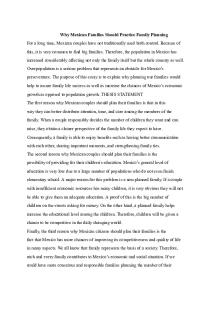The Geography of Winnipeg - Why you should move there PDF

| Title | The Geography of Winnipeg - Why you should move there |
|---|---|
| Course | Physical Geography |
| Institution | High School - Canada |
| Pages | 2 |
| File Size | 58.1 KB |
| File Type | |
| Total Downloads | 19 |
| Total Views | 138 |
Summary
This document talks about land formations, population density, climate, resources, and location factors, compared to other places in Canada....
Description
The Physical geography in Winnipeg Winnipeg’s land is relatively flat and has deep, fertile soil, grasses, and herbs. This would mean that Winnipeg is located in the Interior Plains landform region of Canada. When sediments from the Rocky Mountains and the Canadian Shield were deposited in shallow inland seas and compressed into layers of sedimentary rock, Winnipeg was created. The soil and land in Winnipeg make Winnipeg a prime area for agricultural purposes. Winnipeg is located in the Prairie Climate Region of Canada, which means a continental climate (climate in areas far from an ocean) exists. Winnipeg experiences cold, dry winters, warm humid summers and low precipitation in winter. Although the weather in Winnipeg is cold, Winnipeg’s skies are one of the clearest in all of Canada and Winnipeg takes pleasure in the sunny weather they get all year round. Since the soil in Winnipeg is fertile, the land is relatively flat, and the summers in Winnipeg are humid, Winnipeg would be a prime area for agricultural purposes in the summer months. Winnipeg’s climate is not much different compared to other cities in Canada, so, Winnipeg is a great city to live in. Since Winnipeg is located in the interior plains landform region of Canada, the resources that are being extracted there include rich minerals, coal, oil and gas deposits, since this is what sedimentary rock contains. Other important resources are water and some trees that exist in Winnipeg. The cities diversified economy includes key industries such as advanced manufacturing, aerospace, agribusiness, information and communications technology, energy and environment, financial services, tourism, and transportation and distribution, and many more. The location factors that contribute to the industries are transportation, proximity to raw materials, energy supply, climate, and the available workforce. For energy supply, energy is needed for everyday life and to work equipment and machines that are used in industries. For raw materials, it is important that industries are close to them if the raw materials are heavy and cause a problem to transport. For transportation, trucks and other vehicles such as ships, need to be able to transport resources, etc. For climate, it needs to be favorable so that work can be done efficiently. For available workforce, if no one is willing to work in that specific industry, the industry will not be able to continue to work efficiently and properly. Multiplier effect:
The population density in Winnipeg is approximately 138 people per square km. Winnipeg is not too densely populated; it’s average compared to other densely populated CMA’s such as Toronto and Vancouver. The population distribution in Winnipeg is
The location factors in Winnipeg that attract people are Winnipeg’s land which is relatively flat and has deep, fertile soil, Transportation because Winnipeg has many transportation routes available in the city and going out of the city, Water and other natural resources because there is water nearby in the form of rivers and lakes (ex. Lake Winnipeg) and many natural resources are available, especially ones from sedimentary rock....
Similar Free PDFs

What Does Geography Get You
- 1 Pages

Muscles That Move the Leg
- 2 Pages

WHY WE Should CARE About Prisoners
- 21 Pages
Popular Institutions
- Tinajero National High School - Annex
- Politeknik Caltex Riau
- Yokohama City University
- SGT University
- University of Al-Qadisiyah
- Divine Word College of Vigan
- Techniek College Rotterdam
- Universidade de Santiago
- Universiti Teknologi MARA Cawangan Johor Kampus Pasir Gudang
- Poltekkes Kemenkes Yogyakarta
- Baguio City National High School
- Colegio san marcos
- preparatoria uno
- Centro de Bachillerato Tecnológico Industrial y de Servicios No. 107
- Dalian Maritime University
- Quang Trung Secondary School
- Colegio Tecnológico en Informática
- Corporación Regional de Educación Superior
- Grupo CEDVA
- Dar Al Uloom University
- Centro de Estudios Preuniversitarios de la Universidad Nacional de Ingeniería
- 上智大学
- Aakash International School, Nuna Majara
- San Felipe Neri Catholic School
- Kang Chiao International School - New Taipei City
- Misamis Occidental National High School
- Institución Educativa Escuela Normal Juan Ladrilleros
- Kolehiyo ng Pantukan
- Batanes State College
- Instituto Continental
- Sekolah Menengah Kejuruan Kesehatan Kaltara (Tarakan)
- Colegio de La Inmaculada Concepcion - Cebu












